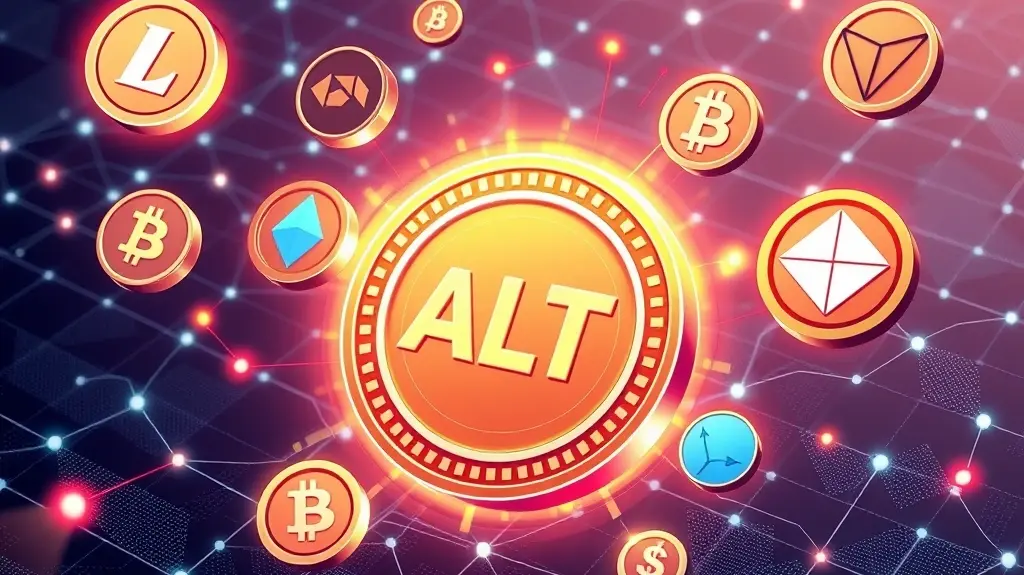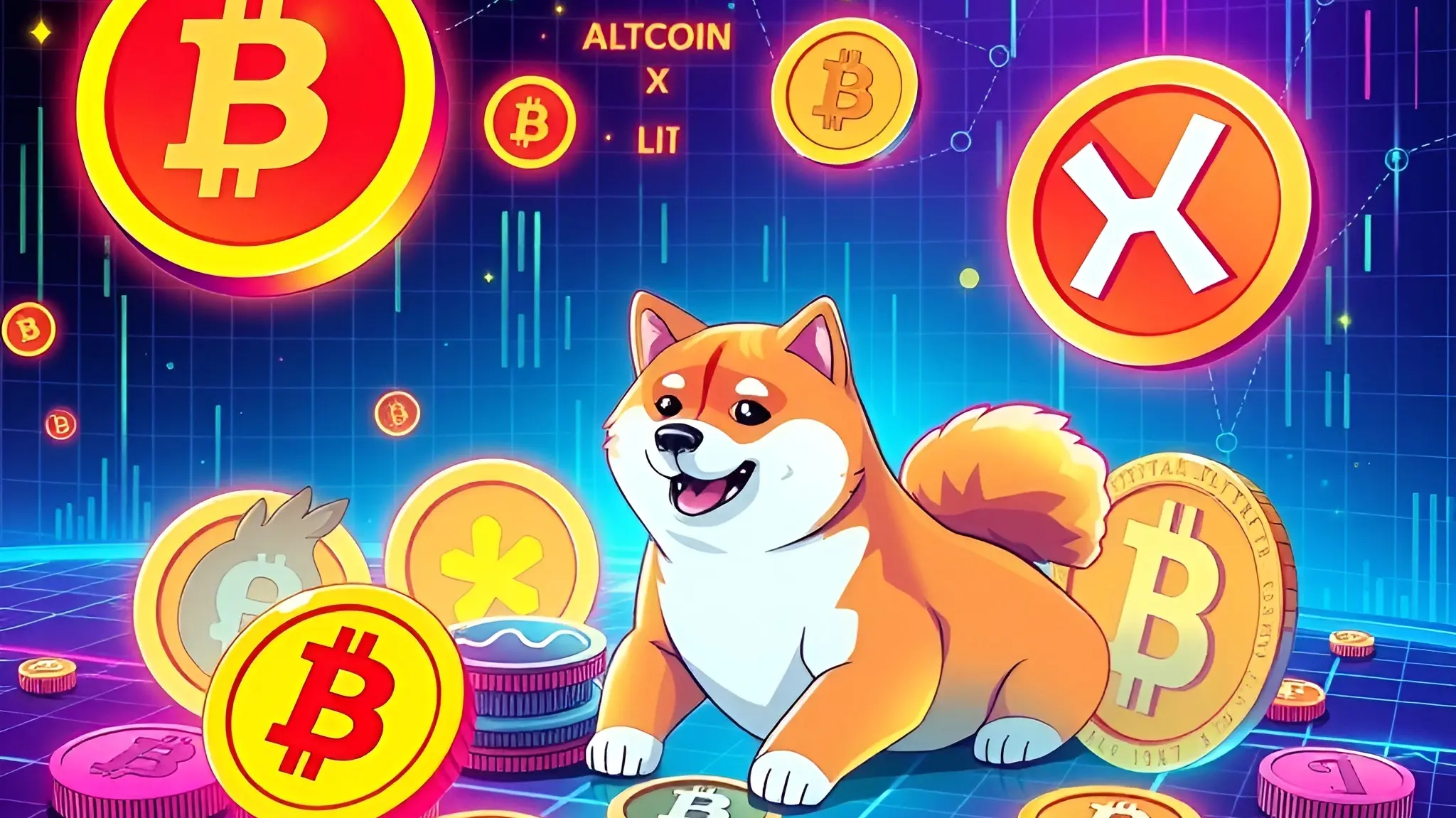What is Altcoin?
What is Altcoins actually means? It’s simply refer to all cryptocurrencies other than Bitcoin (BTC).
Thousands of altcoins address specific limitations of Bitcoin—whether that means faster, more private, or advanced smart contracts.
These alternative assets serve diverse purposes, from powering decentralized finance (DeFi) applications to acting as utility tokens for accessing unique services.
While investing in altcoins can offer rewarding opportunities, it is important to acknowledge the significant risks, particularly due to market volatility.
Key Takeaways:
ShowUnderstanding Altcoins: The Definition
Altcoins—short for “alternative coins“—are any cryptocurrencies that are not Bitcoin. Over time, as the cryptocurrency market has evolved, thousands of altcoins have emerged.
Many of these digital assets aim to improve upon Bitcoin’s limitations, providing faster transactions, better privacy protection, or special functionalities tailored to specific industries.
Examples include Ethereum, known for its support of smart contracts, and Litecoin, valued for its quicker transaction times.
How the Alts become more popular? Well, since Bitcoin first appeared in 2009, the cryptocurrency landscape has rapidly evolved.
This evolution has given rise to a variety of altcoins designed to overcome some of Bitcoin’s limitations.
The introduction of Litecoin in 2011 marked the beginning of this trend, showcasing faster transaction speeds and a unique hashing algorithm.
Types of Altcoins

The altcoin market can be broadly classified into several categories, each serving distinct purposes within the blockchain ecosystem:
1. Utility Tokens Explained
Utility tokens are designed to facilitate transactions and interactions within a blockchain ecosystem.
They often allow users to pay for transaction fees, gain access to premium features, or engage with decentralized applications.
Typically issued during initial coin offerings (ICOs), these tokens can appreciate in value based on market demand.
However, thorough research is needed before investing, as understanding the project and use case is key to mitigating potential risks.
2. Stablecoins Overview
Stablecoins are a critical category of altcoins aimed at maintaining a consistent value, often pegged to fiat currencies like the US dollar or other assets.
This stability makes stablecoins an attractive option for investors seeking to avoid the high volatility common in other cryptocurrencies. There are three main types:
- Fiat-Collateralized: Backed by government-issued currencies.
- Crypto-Collateralized: Supported by other cryptocurrencies.
- Algorithmic Stablecoins: Use smart contracts to balance supply and demand.
Their design provides a reliable means for everyday transactions, hedging against market fluctuations, and acting as a safe haven during volatile periods.
3. Governance Tokens Defined
Governance tokens empower holders to influence the direction of blockchain projects.
These tokens grant voting rights on key decisions—such as protocol upgrades, fund allocation, and community initiatives—promoting transparency and reducing centralized control.
How Altcoins Differ From Bitcoin
Altcoins differ from Bitcoin in several ways, offering unique functionalities and purposes:
1. Purpose and Functionality
While Bitcoin is widely recognized as the pioneering cryptocurrency, altcoins have emerged to serve a variety of specialized roles within the blockchain ecosystem. For instance:
- Smart Contracts: Platforms like Ethereum enable automated, programmable transactions without intermediaries.
- Privacy Features: Cryptocurrencies such as Monero and Zcash focus on enhanced user anonymity.
- Tokenization: Projects like Chainlink facilitate the creation of tokens that represent real-world assets.
These functionalities provide users with tailored options that can better meet individual needs.
2. Market Capitalization Variations
Bitcoin typically dominates the market in terms of capitalization, often commanding over 40% of the total market value.
In contrast, individual altcoins generally make up smaller percentages and can vary widely in valuation.
For example, while Ethereum boasts a substantial market cap, many other altcoins are more volatile, creating diverse opportunities—and risks—for investors.
3. Technology and Protocol Differences
Many altcoins distinguish themselves through unique technological innovations:
- Consensus Mechanisms: Alternative algorithms, such as Proof of Stake, offer greater energy efficiency compared to Bitcoin’s Proof of Work.
- Smart Contracts: Platforms like Ethereum support complex decentralized applications that Bitcoin’s scripting language cannot handle.
- Transaction Efficiency: Altcoins often offer quicker transaction speeds and lower fees, addressing Bitcoin’s scalability challenges during periods of high network traffic.
Popular Altcoins and Their Features
Several altcoins have gained significant traction due to their unique attributes:
- Ethereum: Known for robust smart contract functionality.
- Litecoin: Offers faster transaction times.
- Ripple: Designed for efficient international money transfers.
- Cardano: Emphasizes a research-driven approach with a proof-of-stake consensus mechanism.
- Binance Coin: Serves as a utility token within the Binance ecosystem.
- Solana: Recognized for high throughput and low transaction costs.
Each of these altcoins provides investors with a range of options, emphasizing the need for thorough research to make informed decisions.
Use Cases of Altcoins

Altcoins are more than just investment vehicles; they have practical applications that address real-world challenges:
- Transaction Efficiency: Coins like Litecoin enable everyday purchases with faster, cheaper transactions.
- Smart Contracts: Platforms such as Ethereum automate agreements and reduce reliance on intermediaries.
- Decentralized Finance (DeFi): Altcoins like Chainlink facilitate lending, borrowing, and trading in the absence of traditional banking services.
Integrating altcoins into a digital portfolio can lead to greater diversification and the effective utilization of blockchain technology.
Investing in Altcoins
Investing in altcoins comes with a mix of potential high rewards and significant risks. Understanding diversification strategies and monitoring market trends are crucial for navigating this volatile environment.
Risk and Reward Analysis
Investors are often drawn to altcoins because of the possibility for substantial gains, but they must also consider:
1. Diversification Strategies
Effective diversification can help mitigate the risks associated with altcoin investments. Strategies include:
- Spreading Investments: Allocate funds across multiple altcoins from different sectors, such as DeFi, NFTs, and stablecoins.
- Balancing Portfolios: Combine high-risk altcoins with more established cryptocurrencies to reduce overall volatility.
- Regular Rebalancing: Continuously adjust your portfolio in response to market dynamics to maintain alignment with your investment goals and risk tolerance.
2. Market Trends Impact
Investors should keep a close eye on several market trends that influence altcoin performance:
- Regulatory Developments: New laws and policies can directly impact altcoin markets.
- Market Sentiment: News and social media trends often drive rapid price changes.
- Technological Innovations: Advancements in blockchain technology may enhance the functionality and appeal of certain altcoins.
Staying informed about these trends is crucial for making strategic investment decisions.
Risks Associated With Altcoins
While altcoins can yield high returns, they also come with notable risks:
- Price Volatility: Rapid price fluctuations can lead to significant losses.
- Regulatory Uncertainty: Many altcoins operate in a loosely regulated environment, increasing the risk of fraud or market manipulation.
- Technological Complexity: A lack of understanding of the underlying technology can lead to poor investment decisions.
- Liquidity Issues: Some altcoins might be difficult to sell quickly, potentially exacerbating losses in a downturn.
It is imperative for investors to carefully assess these risks before entering the altcoin market.
Future of Altcoins
The future of altcoins is still in flux, but several trends suggest potential growth and maturation:
- Increased Regulation: Clearer legal frameworks could enhance market stability and investor confidence.
- Institutional Adoption: Growing interest from institutional investors may boost liquidity and credibility.
- Technological Advancements: Continued improvements in scalability and interoperability might increase the practical applications of altcoins.
While uncertainty remains, these trends indicate that altcoins could evolve into a more robust and secure segment of the cryptocurrency market.
Wrapping Up
Altcoins represent a broad spectrum of digital currencies, each with its own unique features and potential applications.
Some altcoins shine with innovation and promise, while others present higher risks reminiscent of the unpredictable nature of a rollercoaster ride.
Just as every amusement park has both exhilarating rides and cautious experiences, the world of altcoins offers both opportunities and challenges.
Frequently Asked Questions (FAQs)
Can Altcoins Be Mined Like Bitcoin?
Yes, many altcoins can be mined using various consensus mechanisms. However, each cryptocurrency may have unique requirements, algorithms, and profitability factors, so thorough research is recommended before engaging in mining.
Are Altcoins Regulated by Governments?
Regulatory oversight of altcoins varies by jurisdiction. Some countries have strict guidelines in place, while others offer more relaxed regulations, resulting in a complex environment for investors and users.
How Do I Store Altcoins Securely?
For safe storage, consider hardware wallets, which keep assets offline, or trusted software wallets with strong encryption. Additionally, enable two-factor authentication and maintain regular backups of your wallet information.
What Is the Role of Altcoin Developers?
Altcoin developers are crucial in enhancing blockchain technology, fostering innovation, ensuring security, and addressing scalability issues. Their work is essential in maintaining and advancing the stability and efficiency of the cryptocurrency ecosystem.
Can I Trade Altcoins for Goods and Services?
Yes, many merchants accept altcoins as a form of payment. However, it’s important to evaluate the stability and security of the particular altcoin before making transactions.

